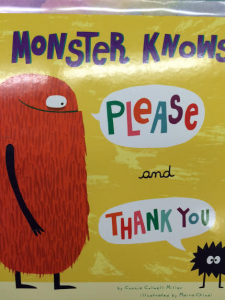
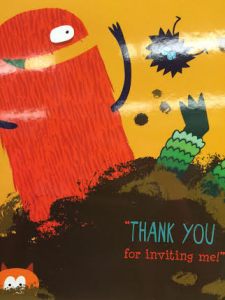
Author: Connie Colwell Miller
Illustrator: Maira Chiodi
Publishing Information: Picture Window Books, 2014
Number of Pages: 20
Genre: Fable
Analysis:
This book gives the story of a group of monster friends who are invited to a party to participate in a variety of activities. While participating in different activities and socializing with the other partygoers, each monster is sure to remember to say “please” and “thank you” where it is warranted. As a result, all the monsters are able to get along nicely and are invited back in the end.
This book struck me as a cute and fun type of introductory to a lesson in manners for children. I thought having monsters as the main characters in the story was an interesting choice, but also tactful. Monsters are typically seen by children as mean and/or scary, so it was even more impactful that these monsters were very well-mannered; if even monsters can say “please” and “thank you,” so can the children reading the story. This provides children with a window to see how others behave in a social setting, a mirror so they may reflect on their own manners, and a door to continue to practice good manners in their everyday lives and social settings.
The illustrations in the book are quite interesting, as the text is integrated within the illustrations. The words “please” and “thank you” are in different colors than the rest of each of the words in the sentences they are included in, and are in large, capital letters. This puts extra emphasis on the importance of these words, and makes them stand out from the rest of the text so children pay more attention to them. Furthermore, the pictures are unframed, allowing children to really put themselves in the scene with the characters. As for the illustrations themselves, the colors remain bright throughout the story, giving a fun and lighthearted feel as the good manners the monsters demonstrate help them to avoid conflict.
I found that this book is certainly a fun and easy way for children to learn proper manners, and how having good manners can help them in social situations. It is easily accessible and quite applicable to the everyday lives of young readers.

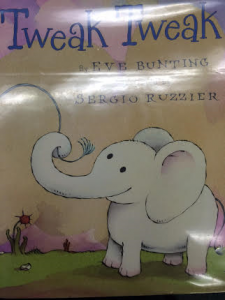

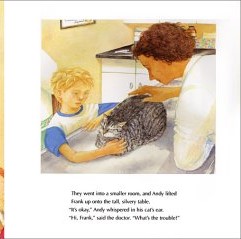 A young girl breaks her arm and it isn’t until she sees that it gets better, that she starts to feel better. As time passes, the young girl gets older and has a son. When her son’s cat breaks his leg, she reassures them both that it’ll get better.
A young girl breaks her arm and it isn’t until she sees that it gets better, that she starts to feel better. As time passes, the young girl gets older and has a son. When her son’s cat breaks his leg, she reassures them both that it’ll get better.

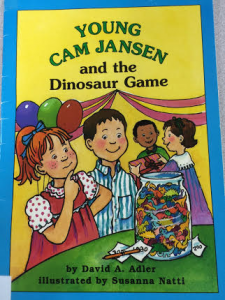

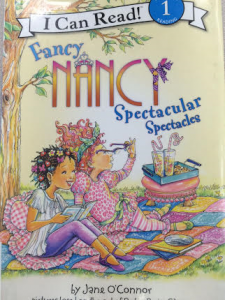

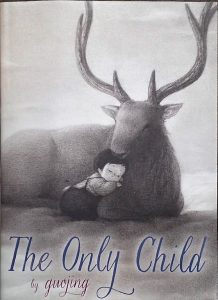
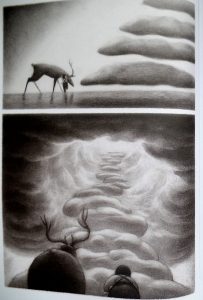 A lonely, only child runs away from home and finds a mysterious stag that takes her to a magical world. In this world, she feels loved and eventually misses home. Guojing takes us through the young girl’s journey back home to her family.
A lonely, only child runs away from home and finds a mysterious stag that takes her to a magical world. In this world, she feels loved and eventually misses home. Guojing takes us through the young girl’s journey back home to her family.
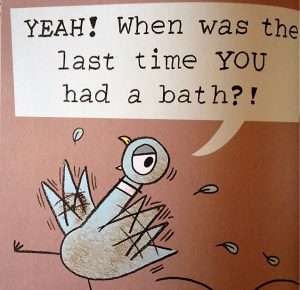 This dirty pigeon uses sarcasm and reverse psychology to get out of taking a bath. When his tactics don’t work and he is forced to take a bath, he realizes that baths aren’t so bad after all.
This dirty pigeon uses sarcasm and reverse psychology to get out of taking a bath. When his tactics don’t work and he is forced to take a bath, he realizes that baths aren’t so bad after all.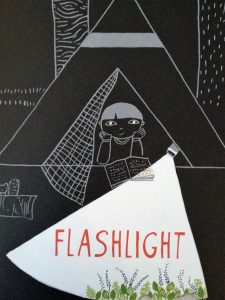
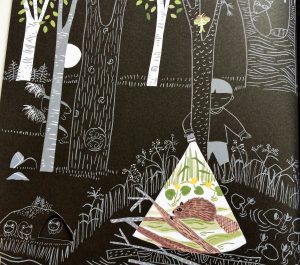 Flashlight is about a young boy who explores the mysterious world outside of his tent. What other way to experience nature than with a flashlight? Like a flashlight, this book helps us experience the beauties of nighttime nature.
Flashlight is about a young boy who explores the mysterious world outside of his tent. What other way to experience nature than with a flashlight? Like a flashlight, this book helps us experience the beauties of nighttime nature.![IMG_9670 [2578141]](https://blogs.iwu.edu/lrbmt2016/files/2016/05/IMG_9670-2578141-218x300.jpg)
![IMG_9671 [2578142]](https://blogs.iwu.edu/lrbmt2016/files/2016/05/IMG_9671-2578142-188x300.jpg) When an unwanted ghost boy, Leo, is “evicted” from his ghost home, he is forced to live on the streets. It isn’t until he meets a young, believing girl that he finally feels accepted and seen.
When an unwanted ghost boy, Leo, is “evicted” from his ghost home, he is forced to live on the streets. It isn’t until he meets a young, believing girl that he finally feels accepted and seen.